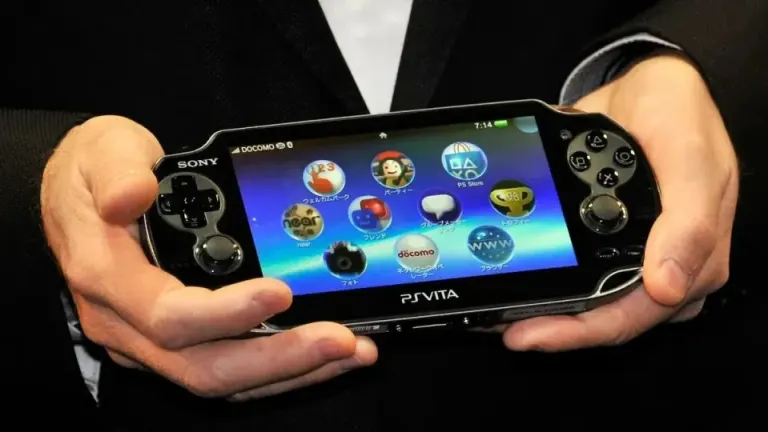Today we are witnessing an evident rebirth of portable consoles. Thanks to Nintendo Switch first, and then the Steam Deck, we have seen the emergence of numerous alternatives, both on the console side and on the laptop side in the form of a console. Retro lovers have Analogue Pocket, those who want something more unique have Playdate, and in between there are all kinds of consoles for each person’s preferences.
It is undeniable that we live in a golden age of laptops. Also, now is the perfect time to reclaim some of the ones that, at the time, we should have appreciated more.

One of those portable devices is the PlayStation Vita. Released on February 15th in North America and February 22nd in Europe, the PlayStation Vita was the successor to the PlayStation Portable, focusing on its large OLED screen, dual touch screens, two joysticks, and a more modern and elegant design. These aspects may sound uninnovative today, but at the time they made it a revolutionary handheld console.
In fact, Sony’s marketing was based on talking about PlayStation Vita as the portable version of a home console. A monster that could play the same games you played in your living room. But many people misunderstood what they meant by that. Although it also has great graphics power, especially compared to the Nintendo 3DS, the revolutionary aspect was in its design and controls.
PlayStation Vita was the first console that had an identical layout to a modern controller. Playing Sony’s handheld console was like holding a PlayStation controller with a huge, high-quality screen, on which you could play the same games as the home consoles. Something absolutely revolutionary, considering that, at that time, the majority of the public associated handhelds with Nintendo. That is, a different style of gameplay than you would have on home consoles, due to both hardware and design limitations.
The great virtue of the PlayStation Vita is that it did twelve years ago what is now valued in the Nintendo Switch or the Steam Deck. Being a home console or a mid-power computer, but portable. The huge screen, the possibility of playing everything anywhere, and the control scheme were already present in Sony’s console. It just arrived ten years too soon.
Because the problem with the Vita was not its catalog. It had all the PlayStation Mobile games, a lot of PSX classics, Sony’s own spinoffs of the big franchises, and all the indie games of the moment. Even today, many people consider that games like OlliOlli or Hotline Miami have their true home on this handheld console. And some classics from the first PlayStation, like Vagrant Story or Final Fantasy VII, have never been played better, legally, than on the Vita.
In addition, being backward compatible, it could also play PlayStation Portable games. And thanks to Remote Play, you could play through streaming on your PlayStation 3 and PlayStation 4 consoles. One of the great virtues of current handhelds, thanks to programs like Chiaki, but already supported natively in 2012.
Although it is still alive today thanks to the modding community, which keeps it alive and has turned it into everything that the Steam Deck is celebrated for today, the PlayStation Vita ceased production on March 1, 2019. Selling around 16 million units in its lifetime, it fell far short of the 80 million units sold by its predecessor, the PlayStation Portable.
What caused this failure? The use of proprietary memory card system, the perception that PlayStation Portable was a secondary console compared to Nintendo DS, and a marketing campaign that failed to communicate the true virtues of the Vita, did a lot of damage to Sony’s console. This has led to, twelve years later and even after demonstrating that it paved the way for a new boom in portable consoles, Sony still hasn’t dared to release a successor to it.
Because while Sony released PlayStation Portal on November 15th, what the audience really wants is a PlayStation Vita 2. What would have been its successor if they hadn’t let it die. But since that’s impossible, here, today, we celebrate the path that PlayStation Vita opened. Even if it came too soon to succeed.

